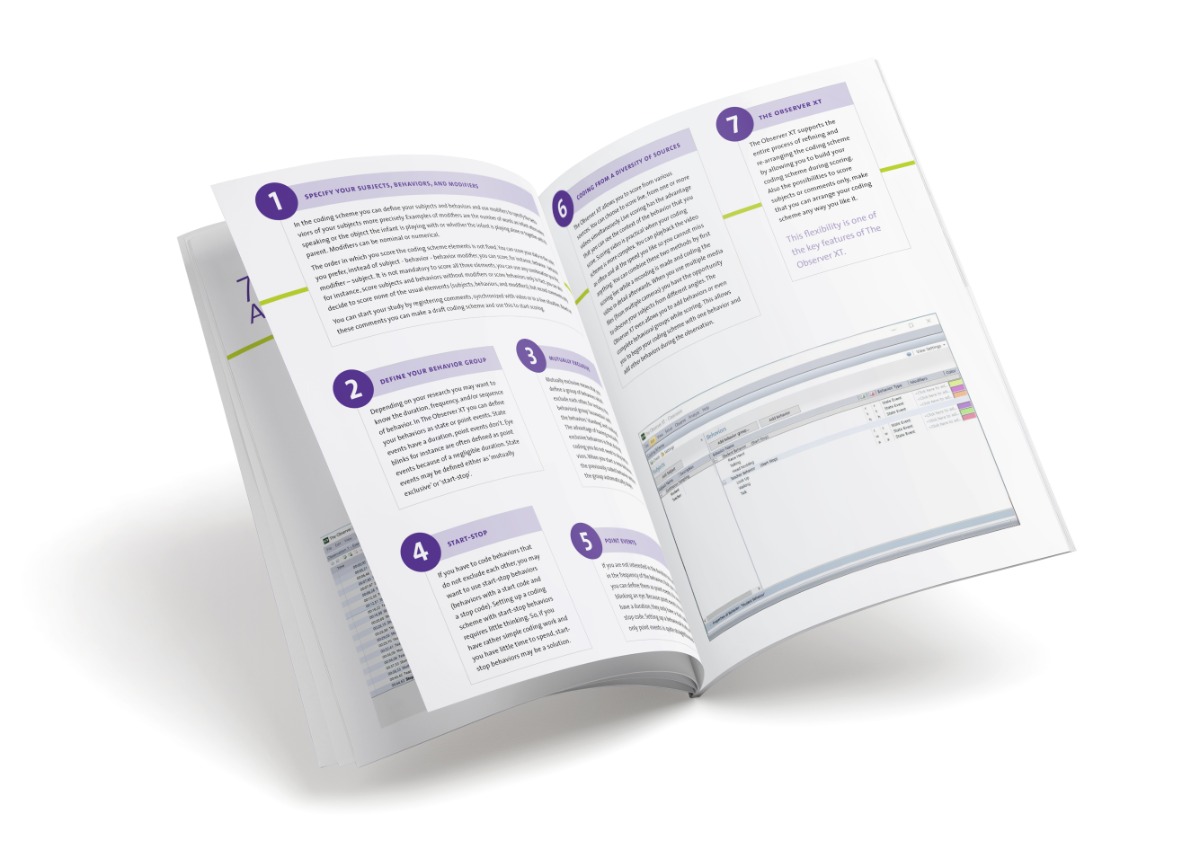
The influence of teachers' motivation behaviors on students' engagement
Engagement is a positive state, a happy feeling, the sum of powerful parts. It ensures that people become proactive, energized, focused, and that they feel more connected with what they are doing. When people are engaged, their motivation, productivity, and performance improves and there is no stress.
The presence or absence of engagement determines the difference between success and failure. That is why this phenomenon is important in all kinds of places in society. At work, in social interaction with others, in marketing, and also in education.
How do you know someone is feeling (highly) engaged? Dayenne Sarkol-Teulings created a custom expression in FaceReader to measure the level of engagement: learn more about her validation study by replaying the webinar 'How to measure engagement from facial expressions'.
Students’ engagement and motivating teaching behaviors
As a student, I was sometimes tempted to stare out the window during class to see what was happening there. That could be far more interesting, especially during a boring lesson about statistics. However, I learned nothing important from that. Instead, I missed critical notes.
It is quite difficult to continuously pay attention or participate during class, but if you manage not to be distracted, it has a huge positive impact on your learning performance, skills development, and the grades you get.
The way in which the teacher teaches has a big influence on whether or not you’ll manage to take part of the lesson. Teachers can increase their students’ engagement by establishing an overall motivating classroom climate and through adopting a motivating teaching style. The self-determination theory (SDT) is the basis for this.
This video shows a customer story about improving teacher practices by using The Observer XT to analyze the interactions.
Exploring behavioral patterns
The research team of Miriam Cents-Boonstra of Radboud University, the Netherlands, aimed to extend previous SDT-related work and offer new insights into the dynamics of motivating teaching behaviors and students’ engagement, by exploring behavioral patterns.
In order to gain clarity about these concepts, it is good to know that students’ engagement has two important characteristics to distinguish:
- positive engagement – such as paying attention, asking questions, supplementing the teacher without any prompt, or taking initiative
- negative engagement – such as being distracted, expressing boredom, disobeying rules, or complaining
The concept motivating teaching behaviors support the basic needs of students:
- autonomy – addressing students’ interest or opinions by asking questions or by offering choices
- competence – providing support during assignments and positive constructive feedback
- relatedness – providing warmth and unconditional respect
In contrast, demotivating teaching behaviors neglect the basic needs of students and consist of (combinations of) controlling, chaotic, or ‘cold’ teaching.
Observing – coding - analyzing
Lessons of 52 teachers to first-years students of one Vocational Education and Training (VET) lecture were video-recorded, coded, and analyzed. The researchers aimed to answer three research questions:
- How to offer new insights into the dynamics of motivating teaching behavior?
- How to offer new insights into students’ engagement behavior?
- Exploring patterns of teachers’ behavior.
By observing, the researchers wanted to get insight into real-time manifestations between teacher and student behaviors. To investigate the patterns of teacher student interactions event coding was required. In other words, coding behaviors at the exact moment they occur.
Creating a new coding scheme
Another goal was to explore patterns comprising motivating and demotivating teaching behaviors on the one hand, and students’ positive and negative engagement on the other hand, both within and across lessons. Since an existing coding scheme was not available, they had to create their own.
All videos were coded in The Observer XT by four coders. To compute the interrater reliability, five videos (10% of the available videos) were double coded.
Download here the FREE white paper 'How to set up behavioral coding - 7 tips'.
Data analysis using The Observer XT
To answer the research questions, the analysis was divided in three different ways:
- Descriptive statistics to gain a sense of the most recurrent behaviors.
- Lag-sequential analyses to investigate the relationship between motivating or demotivating teaching behavior (lag0) and subsequent positive or negative student engagement (lag+1).
- T-pattern analyses to identify patterns in teacher and student behavior.

The research team identified more than 24,000 patterns. They used quantitative selection criteria in order to refine the pattern list to those relevant to this study: patterns of events that contained two actors (teacher and student), a minimum of one or two switches between actors, and a maximum length of three events were selected. This selection yielded 329 patterns.
Additionally, a qualitative selection was made to derive patterns that started with (de)motivating teaching behaviors and ended with student engagement. Within the 329 found patterns, 126 patterns were relevant in answering the research questions.
Out of these 126 patterns, all patterns that started with teaching behaviors followed by student behavior (TS) were selected and further investigated.
Ways to motivate students
A high percentage of the coded teaching behaviors (84%) was labeled as motivating. The observations showed that teachers mostly asked autonomy-supportive questions, called students into account in a motivating way, and provided positive feedback. Motivating teaching behavior was followed directly by positive student engagement in 85% of the occurrences.
The most observed demotivating behaviors were asking controlling questions, providing negative feedback, and one-dimensional instructions. Remarkably, demotivating teaching behaviors were also followed by positive student engagement (66%), although to a lesser extent.
Of all coded student behaviors, more than 81% were rated as positive student engagement. The students seemed eager to learn and asked lots of questions. However, students taking initiative was hardly ever observed.
Keeping students focused
To ensure that students are positively engaged during class, a teacher can promote this by displaying motivational behavior. That will keep the students focused. Both existing teachers and future teachers should be supported in this, for example within the teacher education.
References
Ryan, R. M. & Deci, E. L. (2000). Self-determination theory and the facilitation of intrinsic motivation, social development, and well-being. The American Psychologist, 55(1), 68–78.
Cents-Boonstra, M.; Lichtwarck-Aschoff, A.; Lara, M.M. & Denessen, E. (2021). Patterns of motivating teaching behaviour and student engagement: a microanalytic approach. European Journal of Psychology of Education. https://doi.org/10.1007/s10212-021-00543-3
Get the latest blog posts delivered to your inbox - every 15th of the month
more

How stress and emotions can affect performance
Medical first responders need to undergo extensive trainings to maintain and enhance their skills. Malfait and her team developed a methodology to measure the management of stress and emotions.
How to debrief a training session
What is debriefing, what to expect of debriefing, how to debrief a training session, and why is using a video feedback tool helpful?![10 reasons why AV tool Viso is beneficial for video feedback [INFOGRAPHIC] viso-tool-for-effective-video-feedback](https://www.noldus.com./static/images/core-blog/viso-tool-for-effective-video-feedback-1652087336.jpg)

